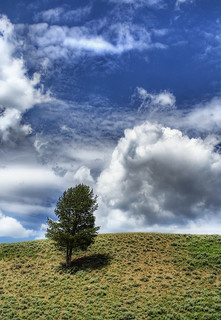Workers in the motion picture industry – like production assistants, security guards, drivers, flaggers, location scouts – face risks from working alone.

Photo credit: Flickr/Trey Ratcliff
Recently I wrote about safety precautions for late night retail workers – describing the “Working Alone” regulation created in 2008 and amended twice in 2012.
Employers of lone retail workers must ensure that the worker is physically separated from the public by a locked door or barrier, assign one or more workers to work with the worker (which isn’t actually working alone), and a third option of using a “violence prevention plan” that includes time lock safes, stored cash and lottery tickets, safety signage, video surveillance, and stipulations for visibility and entry – according to the OHS Regulation Section 4.22.1 – Late night retail safety procedures and requirements.
But it’s not just retail workers who face risks from working alone. Workers in the motion picture industry – like production assistants, security guards, drivers, flaggers, and location scouts – also face similar issues. That’s why ActSafe published a new resource: Fact Sheet #14 Working Alone or In Isolation.
The publication outlines responsibilities for employers, supervisors, and workers, and outlines a person-check procedure in which these lone workers are checked on at regular intervals by a designated person or a third-party service provider. It recommends that lone workers be contacted every half hour or hour, depending on the level of risk, and checked on at the start and end of each work shift.
The person designated to check in – via cell phone, texting, two-way radio
(walkie-talkie), trunked radio, satellite phone, or email – must record each contact and be ready to respond if the lone worker can’t be reached. The last page of the four-page ActSafe publication is a sheet for filling in check-ins – including instructions for when the worker doesn’t respond within five minutes. They are:
- Call another cast or crew member who is nearby, and have him or her check on the lone
worker. - Call the studio or building security or an identified neighbouring business or building, if
there is one, and have someone check on the lone worker. - If necessary, call 9-1-1 and send them to the location.
Also see:
Working Alone: A Handbook for Small Business by WorkSafeBC
Working Alone Regulations from go2 – the human resource association for the tourism and hospitality industry in BC.



Thank you for this excellent resource on an issue that affects so many BC workers! While the factsheet you mention was designed for our industries, the check-in procedure could be modified and used for other industries quite easily.
Thanks, Susan!